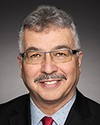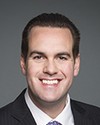We don't have data per se. New Brunswickers, being Atlantic Canadians, were the most enthusiastic of those who reacted to this, and we have the best data from them because of their enthusiasm around this, and their concern. As well, probably because of the nature of that province and the need for rural physicians, they were particularly concerned.
Really, the concerns centre around our ability to retain and recruit rural physicians, to make sure that our younger physicians, the residents who are coming up through the system, feel that they are welcome and that they can replace those of us who are nearing retirement in our system.
We have an example of a resident from Canada who went down to the United States to do a fellowship, who is $300,000 in debt and wrote to us saying, “I was planning on coming back to Canada; however, given the uncertainty of the tax changes, I may make a different decision and stay in the United States.” That's just one example.
We also are worried about the ability of our single-parent physicians, for example, who have constructed their lives and their businesses in order to fund their small business. They've also set some aside for their family. Their ability to make that balance work may be significantly changed by this.
What we are saying is that the reaction has been loud and very clear, and not just from physicians. The main thrust is that the entire small business community in Canada has said this is a significant change—as you have said, perhaps the biggest change in 40 years—and we need more time than 75 days.
I speak for certainly our association and everyone at that small business table who says, “We are more than willing to look at tax measures, working in a constructive way”, in much the same way that all of our asks today are constructive, saying that we are willing to work together. Just because we're opposed on one issue does not mean we don't want to work together, but the time is so short that we feel we need to extend that time so we can have more deliberations.




